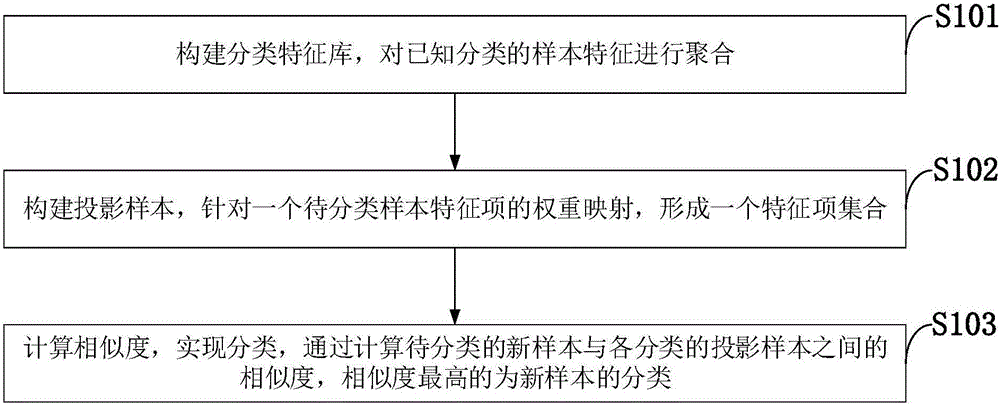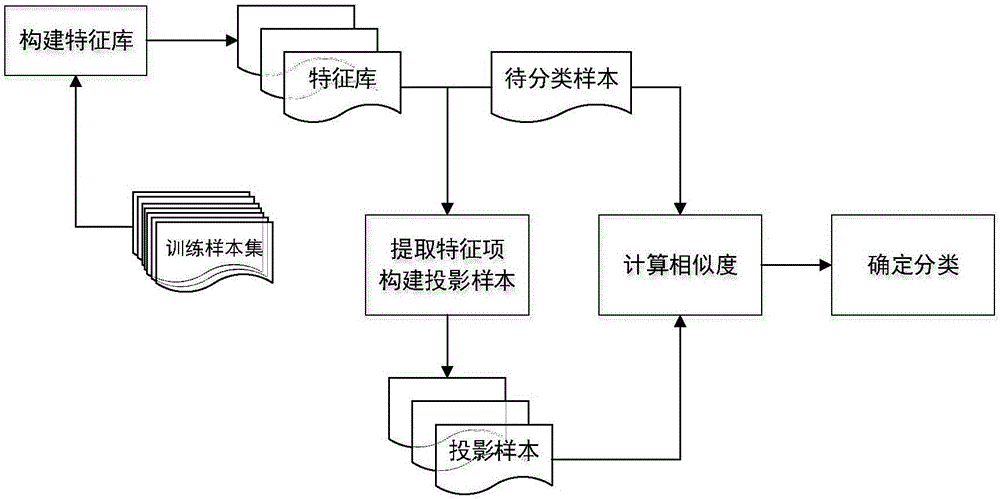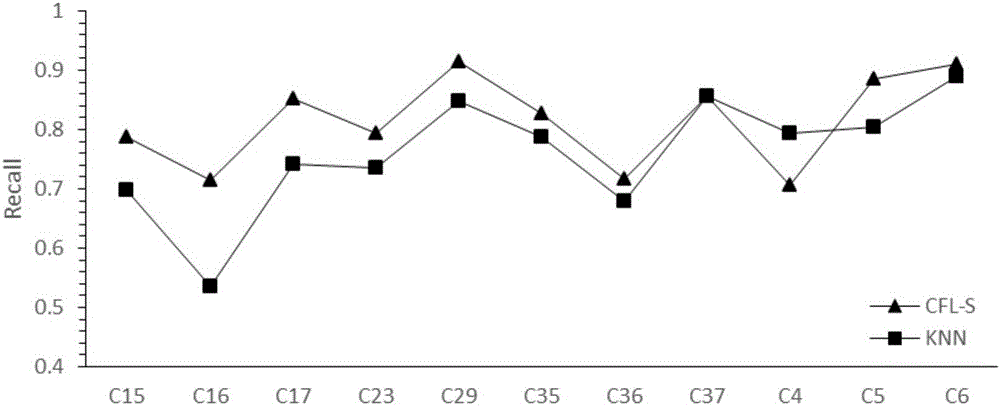Classification method based on feature library and projection
A classification method and feature library technology, which can be used in instruments, character and pattern recognition, computer parts, etc., and can solve problems such as high computational complexity and large amount of k-NN computation.
- Summary
- Abstract
- Description
- Claims
- Application Information
AI Technical Summary
Problems solved by technology
Method used
Image
Examples
Embodiment Construction
[0039] In order to make the object, technical solution and advantages of the present invention more clear, the present invention will be further described in detail below in conjunction with the examples. It should be understood that the specific embodiments described here are only used to explain the present invention, not to limit the present invention.
[0040] The classification algorithm based on the feature library-projection (CFL-S) of the present invention is proposed to solve the problems that the computational complexity of SVM pre-training is relatively high and the calculation amount of k-NN is too large in the classification process. Based on the idea of statistics, CFL-S found that samples in the same category have a greater probability of having the same feature items than samples in other categories. These feature items are often the features of the category, so the characteristics are formed through the aggregation of samples. library (CFL), the weights of t...
PUM
 Login to View More
Login to View More Abstract
Description
Claims
Application Information
 Login to View More
Login to View More - R&D
- Intellectual Property
- Life Sciences
- Materials
- Tech Scout
- Unparalleled Data Quality
- Higher Quality Content
- 60% Fewer Hallucinations
Browse by: Latest US Patents, China's latest patents, Technical Efficacy Thesaurus, Application Domain, Technology Topic, Popular Technical Reports.
© 2025 PatSnap. All rights reserved.Legal|Privacy policy|Modern Slavery Act Transparency Statement|Sitemap|About US| Contact US: help@patsnap.com



